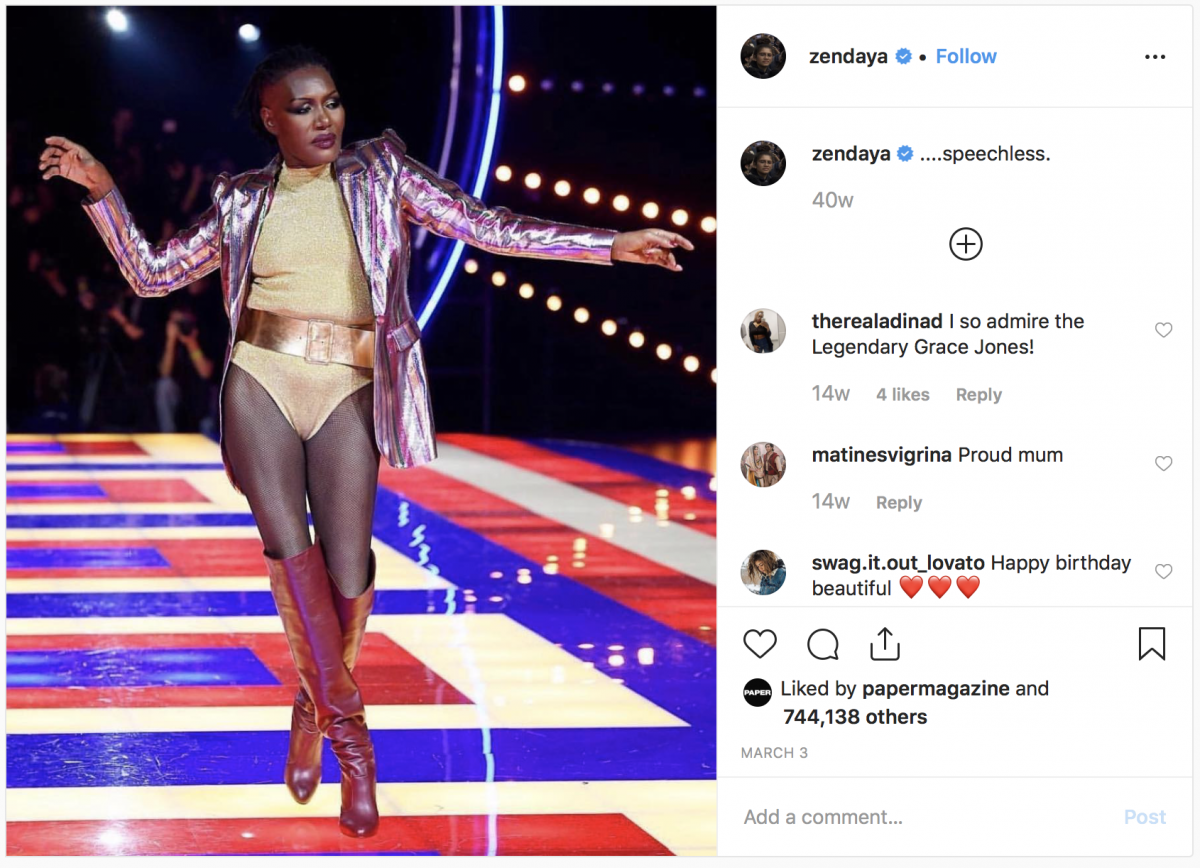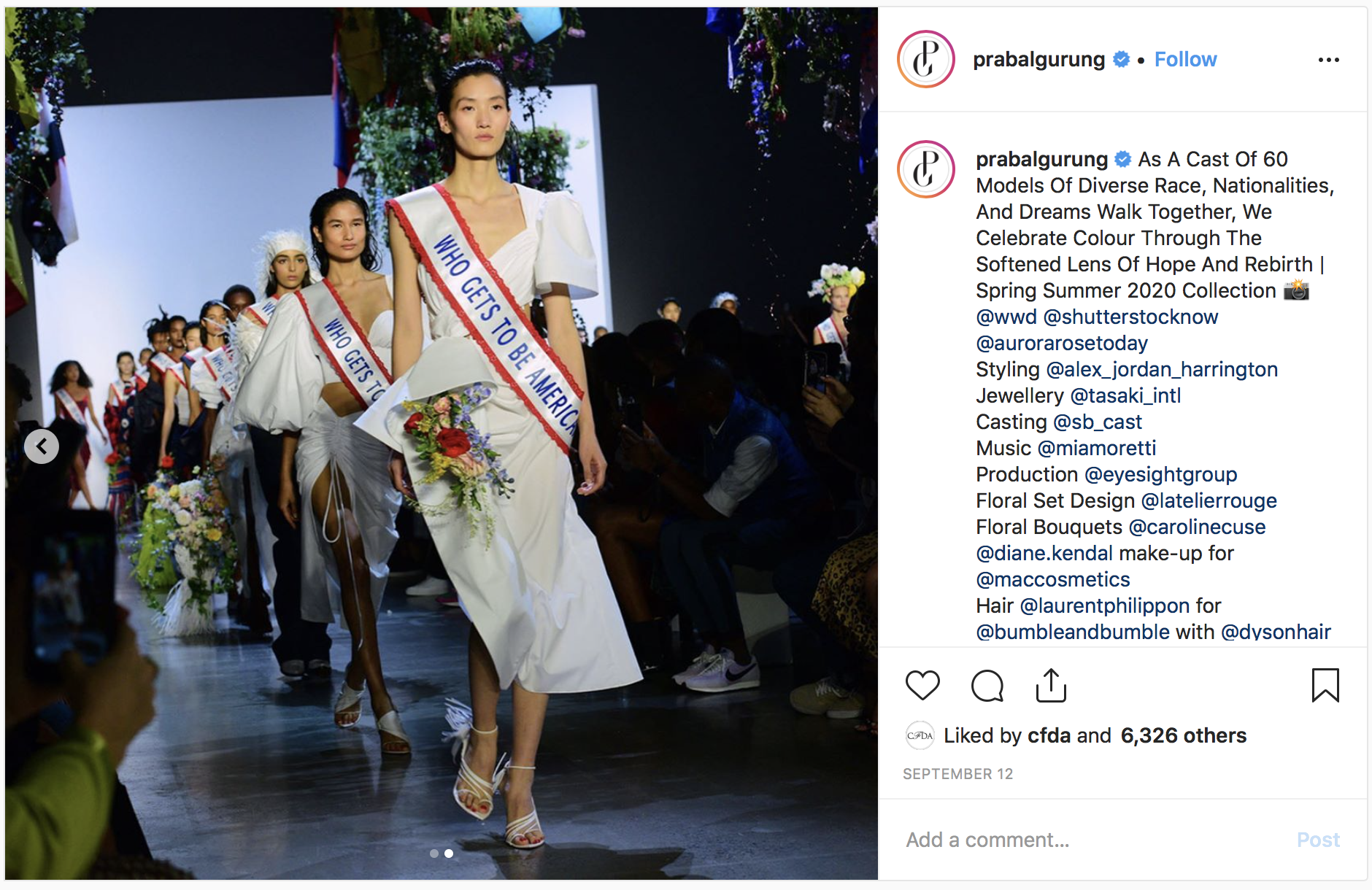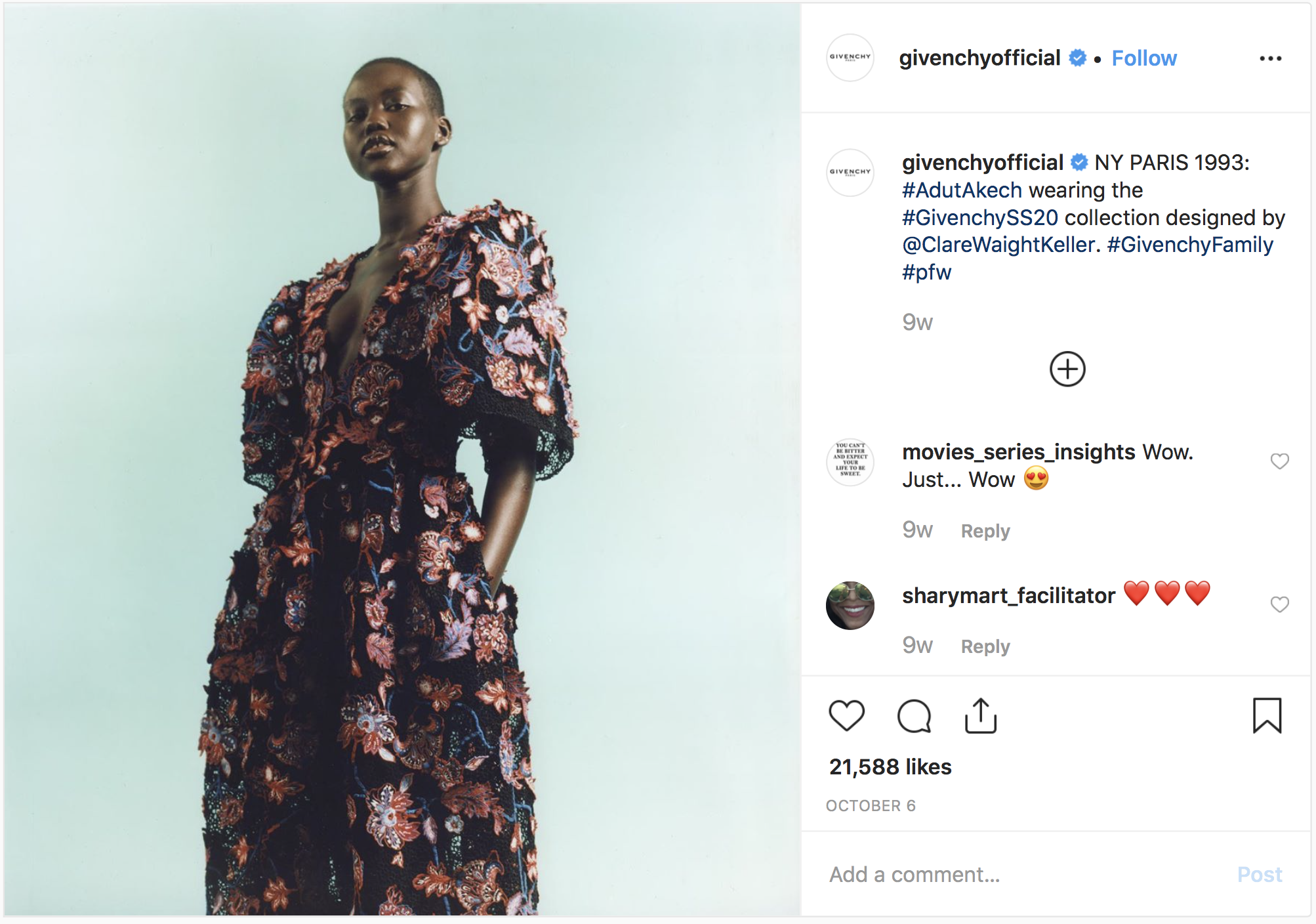Zendaya’s collaboration with Tommy Hilfiger
Historically, white, skinny, and straight women have been the face of fashion. The rise of social media has made the last few years revolutionary in changing that standard. Gender and size inclusivity, along with racial representation, are becoming the norm as brands recognize they would be alienating their customers if they choose to ignore these issues. Although the fashion industry is still confronting its uneasy relationship with racial diversity, reports suggest that it is now more racially diverse than ever, and we’ve compiled a few notable moments from the past two years as evidence.
On the runway:
The fashion industry can finally witness more than a spectrum of colorful ensembles at major shows. According to a report by Fashion Spot, nearly half (45.8 percent) of the models cast in NYFW this fall were women of color. While New York has always been a step ahead in inclusion, the Fall 2019 runways in London, Milan and Paris also featured two models of color for every five that were cast.
The 22-year old actor presented her first collection with Tommy Hilfiger on a Saturday night in Paris, for the Spring 2019 show. 59 black models from the ages 18 to 70 strutted down the ‘70s themed runway, wearing sparkling blazers, retro accessories, and flared jeans. Iconic women of color like Pat Cleveland, Beverly Johnson, and Winnie Harlow accompanied Grace Jones, who closed the nostalgic Harlem party in a spicy bodysuit and blazer.
Prabal Gurung asks “Who Gets to Be American”
Designer Prabal Gurung set out to redefine what it meant to be American in his Spring-Summer 2020 collection. Featuring a melting pot of cultural influences, patriotic colors and a diverse cast of models, the show addressed the increasing number of policies made by the U.S. government villainizing immigrants. Ultimately, Gurung left the stunned attendees with the question “Who gets to be American?” printed on bright red, white and blue beauty pageant sashes.
Top models for fashion week
The top 50 list from Models.com currently features 44% women of color. Fashion Spot also reported that the top 10 models for Fall 2019 included 9 models of color, with Mayowa Nicholas walking thirteen shows. This data is impressive, but the forecast for Spring 2020 reflects the unsteady relationship the fashion industry has with diversity. Only 3 top models were women of color, with Adut Akech being the only black model in the top 10, and Asian models Lina Zhang and Sora Choi being the other two women of color.
In Media:
Beyonce’s 2018 Vogue takeover blessed the magazine’s 126-year history with its first cover shot by a black photographer, Tyler Mitchell. The long-awaited milestone proved that for representation to move beyond tokenism, the person of color must already be in a place of power.

Magazine covers were more diverse than ever
Fashion publications are making strides, bringing the number of nonwhite cover models up from 17.4% in 2014 to 37.7% in 2018. CR Fashion Book and Vogue Taiwan featured 100% people of color on their covers in 2018, while magazines like Vogue U.K. brought their tally of six nonwhite cover stars over 14 years up to 18. The British publication featured those 12 people in just on year. We also examined the Vogue USA cover stars in 2019, with 8 out of 19 personalities featured on the cover being people of color (42%)!
Project Runway’s all-new avatar
After Heidi Klum bid “auf Wiedersehen” last year, the popular show for upcoming fashion designers made a return to the screen this year with noticeable diversity in their new panel of judges and contestants. Journalist and editor Elaine Welteroth is on the judging panel, while special guests this season include Harlem-based Dapper Dan and Cardi B.

Rihanna’s iconic SavageXFenty show
The musician and entrepreneur dazzled audiences with a performance art party for her lingerie brand. Redefining parameters for sexy put in place by years of Victoria’s Secret fashion shows, the SavageXFenty show showcased their underwear on models that were plus-sized and petite, abled and disabled, and of all races and ethnicities. “I’m looking for unique characteristics in people that aren’t usually highlighted in the world of fashion,” Rihanna said, summing up her mission statement for the brand.
In brands:
Watchdog Diet Prada has been instrumental in bringing awareness to the racism and general appropriation evident in brands, with scandals like Dolce and Gabbana’s racist ad in China as well as Gucci’s blackface merchandise brought to the forefront, much to the shame of the industry. However, most of these brands are paying attention, and while it may not be genuine representation, it is a start.
Diversity hires in luxury brands
In February this year, Prada put together a diversity council to close the inclusion gap in the fashion industry. In July, Chanel appointed Fiona Pargeter to their new role: Global Head of Diversity and Inclusion. Following this, Gucci also announced a new global head of diversity, equity and inclusion with the appointment of Renée Tirado.
Advertisements featured women of color
After a review of Fall 2019 ad campaigns of 166 major fashion brands, it was reported that 39.3% of the model appearances were women of color.
While we’re definitely seeing progress over racial diversity in the past two years, the fashion industry is still continuously grappling with the issue, while also wrapping its head around representation of size and gender. Gradually (and possibly at a glacial pace), the industry will be on its way to real inclusion.





